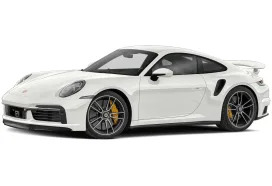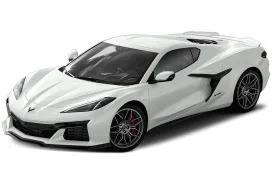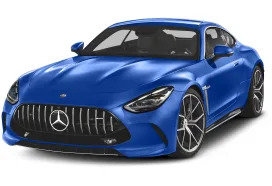-
Trim911 Carrera GTS
-
Engine3.8L Flat-6
-
Power430 HP / 325 LB-FT
-
Transmission7-Speed DCT
-
0-60 Time3.8 Seconds
-
Top Speed187 MPH
-
DrivetrainRear-Wheel Drive
-
Engine PlacementRear
-
Curb Weight3,185 LBS
-
Seating2
-
MPG19 City / 27 HWY (est.)
-
Warranty4 Years / 50,000 Miles
-
Base Price$115,195
-
As Tested Price$125,000 (est.)
UPDATE: An earlier version of this story referenced the 911's six-speed manual transmission, but of course, Porsche uses a seven-speed manual in this car. The text has been changed to reflect this.
There are no fewer than 19 different models in today's Porsche 911 series. While each appeals to the enthusiast, the race-bred GT3 is the pinnacle of the automaker's rear-engined lineup. Unfortunately, and despite the GT3's racing circuit prowess, its rigid track-tuned persona is too grating for many as a daily driver. To satisfy those who put sporty driving dynamics at the top of their list, but don't want to compromise comfort, Porsche has introduced the 2015 911 Carrera GTS.
Raising its performance quotient, the GTS model boasts a handful of standard features that elevate it above its Carrera S siblings. Mechanically, it features an enhanced 3.8-liter flat-six bolted into the tail of the widebody platform (shared with the Carrera 4 and GT3). Other goodies include Porsche Torque Vectoring (PTV), Porsche Active Suspension Management (PASM), a black-tipped Sport exhaust system and centerlock 20-inch 911 Turbo S wheels (five-lug wheels are a no-cost option). Cosmetically, the GTS is differentiated by its darkened lights, painted black wheels, Sport Design front spoiler, Sport Design exterior mirrors, black engine grille, rear black louvers (or lights on all-wheel drive models) and a 'GTS' logo on the lower doors. Inside the cabin are standard Sport Plus seats, Alcantera upholstery throughout with contrasting stitching, black gauges and anodized black aluminum trim.
Offering us an excellent opportunity to put the second-generation GTS through its paces on a variety of roads, Porsche tossed us the keys in the LA Basin and pointed us towards Willow Springs Raceway, in the Mojave Desert.
Driving Notes
There are no fewer than 19 different models in today's Porsche 911 series. While each appeals to the enthusiast, the race-bred GT3 is the pinnacle of the automaker's rear-engined lineup. Unfortunately, and despite the GT3's racing circuit prowess, its rigid track-tuned persona is too grating for many as a daily driver. To satisfy those who put sporty driving dynamics at the top of their list, but don't want to compromise comfort, Porsche has introduced the 2015 911 Carrera GTS.
Raising its performance quotient, the GTS model boasts a handful of standard features that elevate it above its Carrera S siblings. Mechanically, it features an enhanced 3.8-liter flat-six bolted into the tail of the widebody platform (shared with the Carrera 4 and GT3). Other goodies include Porsche Torque Vectoring (PTV), Porsche Active Suspension Management (PASM), a black-tipped Sport exhaust system and centerlock 20-inch 911 Turbo S wheels (five-lug wheels are a no-cost option). Cosmetically, the GTS is differentiated by its darkened lights, painted black wheels, Sport Design front spoiler, Sport Design exterior mirrors, black engine grille, rear black louvers (or lights on all-wheel drive models) and a 'GTS' logo on the lower doors. Inside the cabin are standard Sport Plus seats, Alcantera upholstery throughout with contrasting stitching, black gauges and anodized black aluminum trim.
Offering us an excellent opportunity to put the second-generation GTS through its paces on a variety of roads, Porsche tossed us the keys in the LA Basin and pointed us towards Willow Springs Raceway, in the Mojave Desert.
Driving Notes
- The GTS is offered in coupe or Cabriolet body styles, each with a choice between rear- and all-wheel drive. Buyers are also offered a choice between a traditional seven-speed manual gearbox or Porsche's seven-speed dual clutch transmission (PDK). The GT3, meanwhile, is only offered as a coupe with PDK. We grabbed the keys to a Guards Red rear-wheel drive coupe with PDK for our outbound drive, and a GT Silver Metallic all-wheel drive Cabriolet with a seven-speed manual for our return trip.
- Finding another 30 horsepower from the naturally aspirated 3.8-liter flat-six required some old-fashioned tricks. Most notably, the engineers increased the valve stroke from 11 millimeters to 11.7, and streamlined and polished the intake induction pipes. Both tweaks increase airflow, which boost power at the high end without hurting fuel economy. With the sport exhaust activated (via a console-mounted button) the engine has a very unique and raspy note that is unmistaken for anything but a horizontally opposed six. It wails under full throttle, and booms and cackles under deceleration. Bystanders outside the Porsche get the finest audible show, as the noise filtered through the rear bulkhead is dulled and muted by the thick firewall insulation (of course, with the top down, the Cabriolet lets all the combustion music in).
- The naturally aspirated six-cylinder doesn't have the torque of today's best turbocharged units, but what it lacks at the low end of the tachometer is more than made up once the revs climb. The engine lives to spin, eagerly shooting from idle to redline without so much of a hiccup or hesitation. The 911 GTS feels plenty quick off the line, but it really screams once it clears 6,000 rpm – at that point, with all of the intakes open, the engine is in a frenzied boil. Only the arrival of the fuel cut-off, just shy of 8,000 rpm, ends the party.
- Porsche permits the driver to configure powertrain and suspension dynamics separately with a series of buttons on the center console. By default, all settings are in the softest setting. Engage the 'Sport' or 'Sport Plus' modes to aggressive alter the dampers, throttle (and pedal) response and mapping of the PDK gearbox. The volume of the exhaust note is altered with its own button. Default setting is plenty sporty for daily driving, with stiff damping and quick throttle response, but spry 'Sport Plus' (with much higher stability control thresholds) is the preferred setting on a race circuit.
- On public roads, the GTS rides firmer than the Carrera S (as expected) and there is more tire noise permeating the cabin (also expected), but our enthusiast side accepted the tradeoff as there isn't a road west of the Mississippi that poses even a remote challenge to the Porsche's capability.
- On the intimidating Big Track at Willow, the Porsche performs remarkably. The GTS' lowered stance and wider track (when compared to the standard and S models) complement the staggered Pirelli PZero tires to provide neck-aching lateral grip (the on-board computer registered 1.32 gs laterally). Our laps are effortlessly fast, thanks to a near-perfect balance of horsepower, handling dynamics and braking capability. Even with its engine hanging aft of the rear axle, the refined 991-platform is completely docile at the limit. More important, it hasn't lost any rear-engine strengths, which include eyeball-bursting braking and the ability to mash the throttle early upon corner exit. With most of its weight over the rear tires, the GTS rockets around difficult and tight Turn 4 without scrubbing its outside front tire and it is impressively stable around white-knuckle Turn 8 at well over 100 miles per hour.
- We went into the drive expecting the seven-speed manual to be our preferred gearbox, but the PDK stole the show. When left in Drive ('Sport Plus' mode), its shift logic was nearly faultless and lightning fast. We can't say the same about our rowing performance when we attempted the same exercise in the three-pedal model.













Sign in to post
Please sign in to leave a comment.
Continue